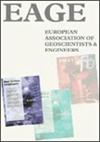Bayesian inversion and uncertainty analysis
IF 1.6
4区 地球科学
Q3 GEOCHEMISTRY & GEOPHYSICS
引用次数: 0
Abstract
Quantification of non‐uniqueness and uncertainty is important for transient electromagnetism (TEM). To address this issue, we develop a trans‐dimensional Bayesian inversion schema for TEM data interpretation. The trans‐dimensional posterior probability density (PPD) offers a solution to model selection and quantifies parameter uncertainty resulting from the model selection from all possible models rather than determining a single model. We use the reversible‐jump Markov chain Monte Carlo sampler to draw ensembles of models to approximate PPD. In addition to providing reasonable model selection, we address the reliability of the inversion results for uncertainty analysis. This strategy offers reasonable guidance when interpreting the inversion results. We make the following improvements in this paper. First, in terms of algorithmic acceleration, we use the nonlinear optimization inversion results as the initial model and implement the multi‐chain parallel method. Second, we develop double factors to control the sampling step size of the proposed distribution, so that the sampling models cover the high‐probability region of the parameter space as much as possible. Finally, we provide the potential scale reduction factor‐贝叶斯反演和不确定性分析
非唯一性和不确定性的量化对于瞬态电磁学(TEM)非常重要。为解决这一问题,我们开发了一种用于 TEM 数据解释的跨维贝叶斯反演模式。跨维后验概率密度(PPD)为模型选择提供了一种解决方案,并量化了从所有可能模型中选择模型而不是确定单一模型所产生的参数不确定性。我们使用可逆跳转马尔科夫链蒙特卡洛采样器绘制模型集合,以近似 PPD。除了提供合理的模型选择,我们还解决了不确定性分析中反演结果的可靠性问题。这一策略为解释反演结果提供了合理的指导。我们在本文中做了以下改进。首先,在算法加速方面,我们将非线性优化反演结果作为初始模型,并实现了多链并行方法。其次,我们开发了双因子来控制建议分布的采样步长,从而使采样模型尽可能覆盖参数空间的高概率区域。最后,我们提供了潜在规模缩减因子-η收敛标准来评估样本的收敛性,确保输出模型的合理性。建议的方法首先在合成数据上进行了测试,随后应用于实地数据集。TEM 反演结果表明,概率反演可通过不确定性分析为数据解释提供可靠的参考。
本文章由计算机程序翻译,如有差异,请以英文原文为准。
求助全文
约1分钟内获得全文
求助全文
来源期刊

Near Surface Geophysics
地学-地球化学与地球物理
CiteScore
3.60
自引率
12.50%
发文量
42
审稿时长
6-12 weeks
期刊介绍:
Near Surface Geophysics is an international journal for the publication of research and development in geophysics applied to near surface. It places emphasis on geological, hydrogeological, geotechnical, environmental, engineering, mining, archaeological, agricultural and other applications of geophysics as well as physical soil and rock properties. Geophysical and geoscientific case histories with innovative use of geophysical techniques are welcome, which may include improvements on instrumentation, measurements, data acquisition and processing, modelling, inversion, interpretation, project management and multidisciplinary use. The papers should also be understandable to those who use geophysical data but are not necessarily geophysicists.
 求助内容:
求助内容: 应助结果提醒方式:
应助结果提醒方式:


